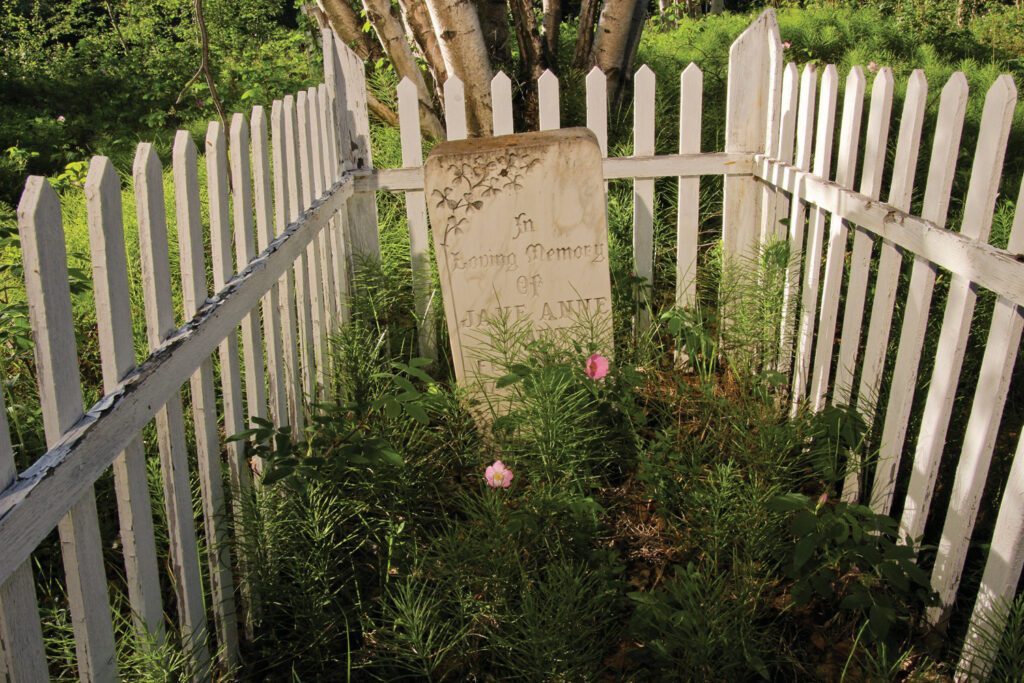Story and photo by James MacKenzie
In 2005, an elderly couple visiting Yellowknife asked me if I knew where the old Indian cemetery was. I had no clue what they were talking about. Later that summer I was walking my dog on the ski trails with a few friends when we came across a dead raven. Being superstitious folk, we detoured into the woods to go around it and found a rickety old bridge that spanned a dried-up creek.
The warm and sunny afternoon suddenly took on a serious tone as we found ourselves among the not so recently departed. Beneath a sheer cliff face, nuzzled on a small hill with a creek running at its base, gravestones and crosses littered the ground around us. Fences that surrounded burial plots had been partially taken over by nature. Weeds grew rampant on the graves and various animals had burrowed out homes or dug up bones. A lot of the graves belonged to children, the rest to young men. I had found the Back Bay Cemetery.
Despite its derelict condition, there was a calmness about the area. The late afternoon sun looked and felt a little warmer. Before the Lake View Cemetery opened, this is where Yellowknifers buried their dead in the 1930s and 40s. And it is possibly the resting place for some of Yellowknife’s aboriginal ancestors. One headstone, low to the ground and partially damaged, had a picture of the man buried there; Peter Hendrick, Feb, 9, 1917 – June 24, 1942, with the inscription: “his spirit will dwell forever in this place which he so loved. I will lift up mine eyes up to the hills.”
Those steep hills block out the noise from the city, reflect the warmth of the sun, and shield against the wind. It is not out of the ordinary to sit on top of them and watch as foxes and coyotes chase mice around the graves, or to have a bald eagle glide silently over your head, so close you can almost touch it.
There is a feeling of tranquility and a stillness of spirit as I stand among the dead of Yellowknife’s founders; thinking of the hard life the prospectors and miners led, and that their loved ones were able to find a perfect piece of northern wilderness as their final resting spot.







